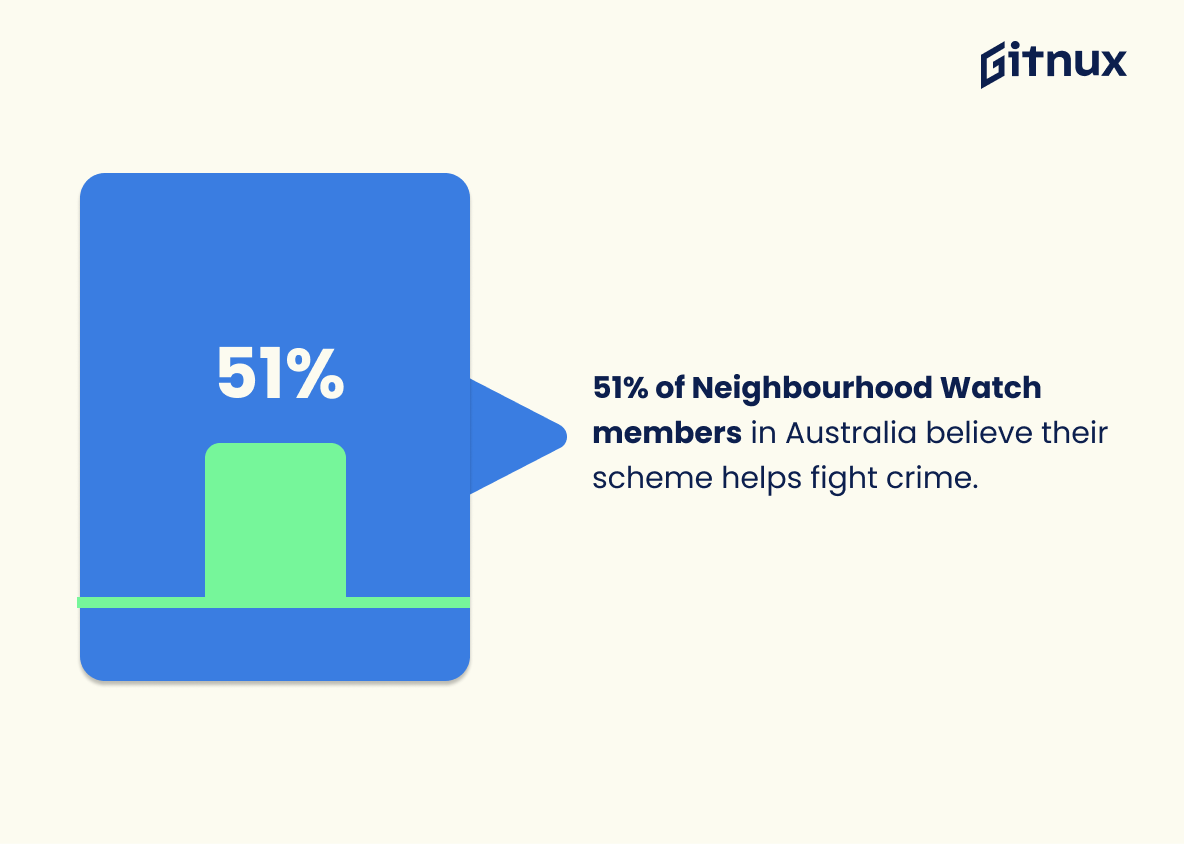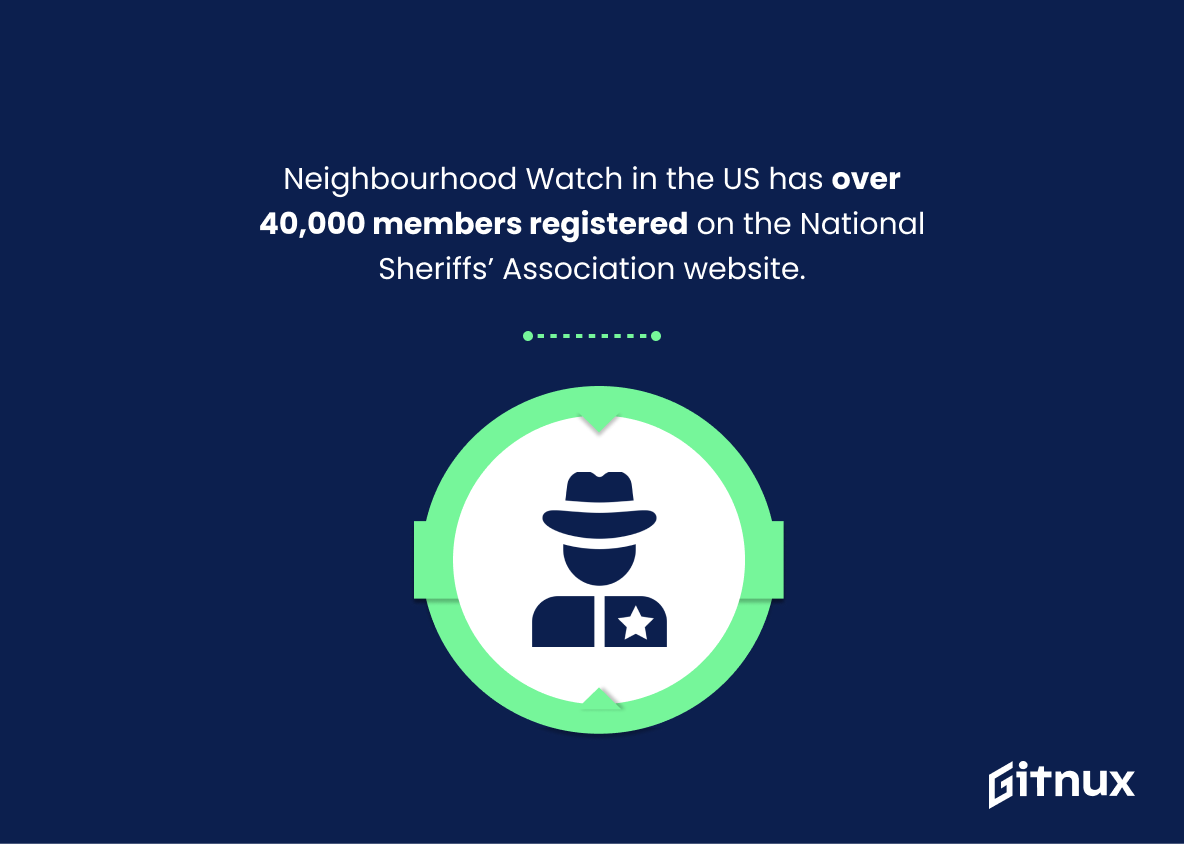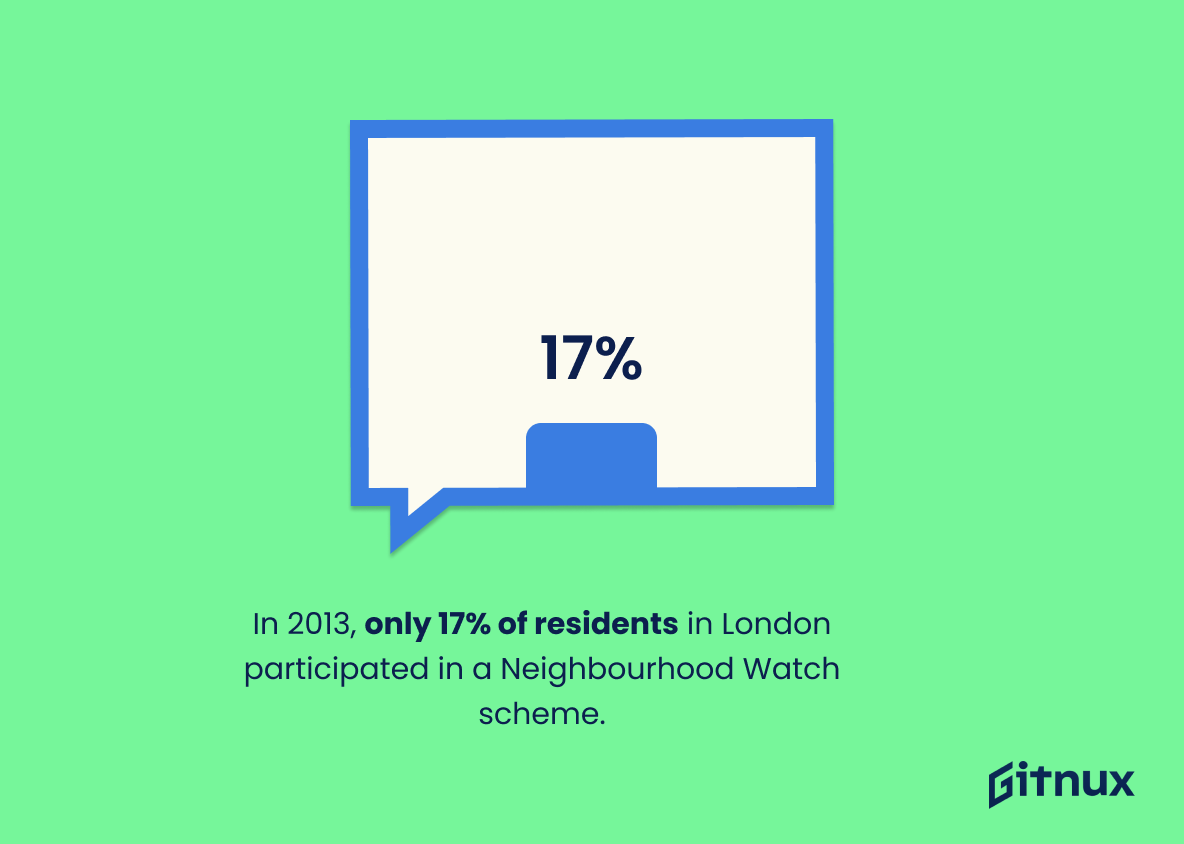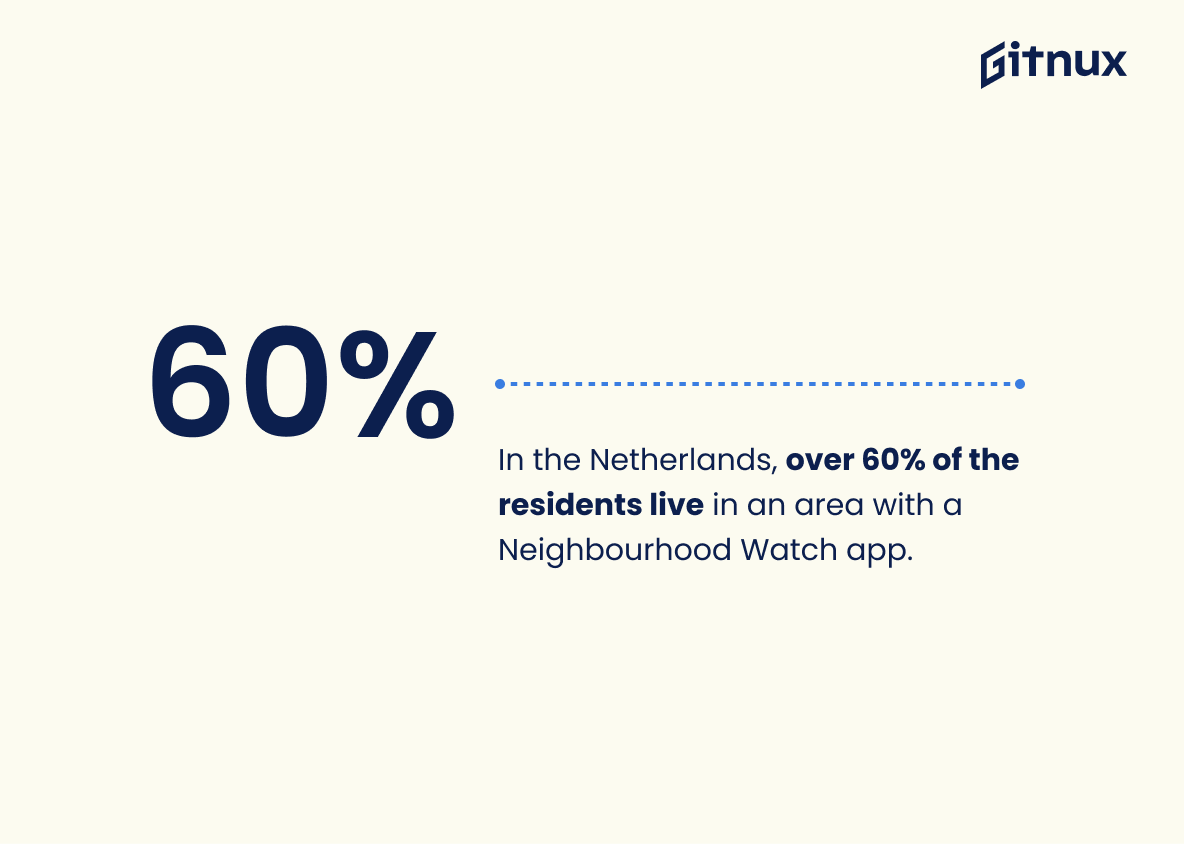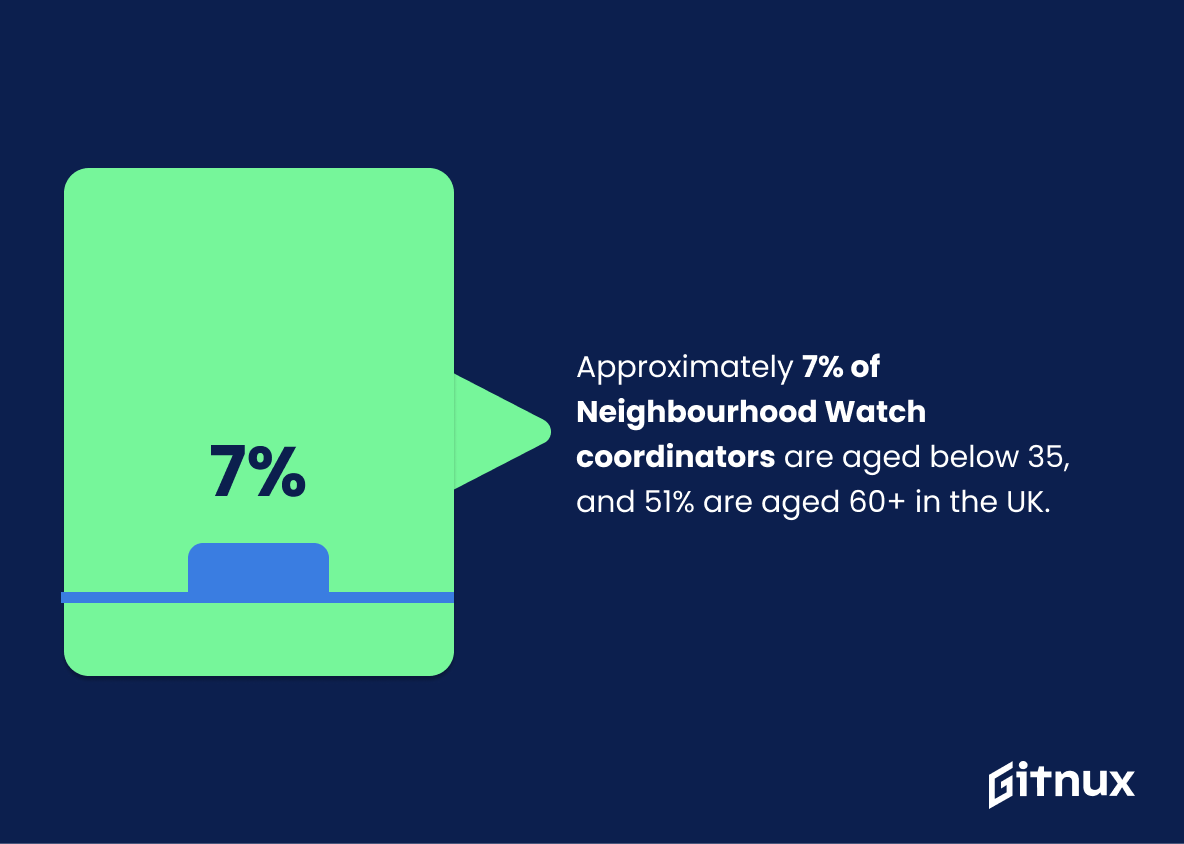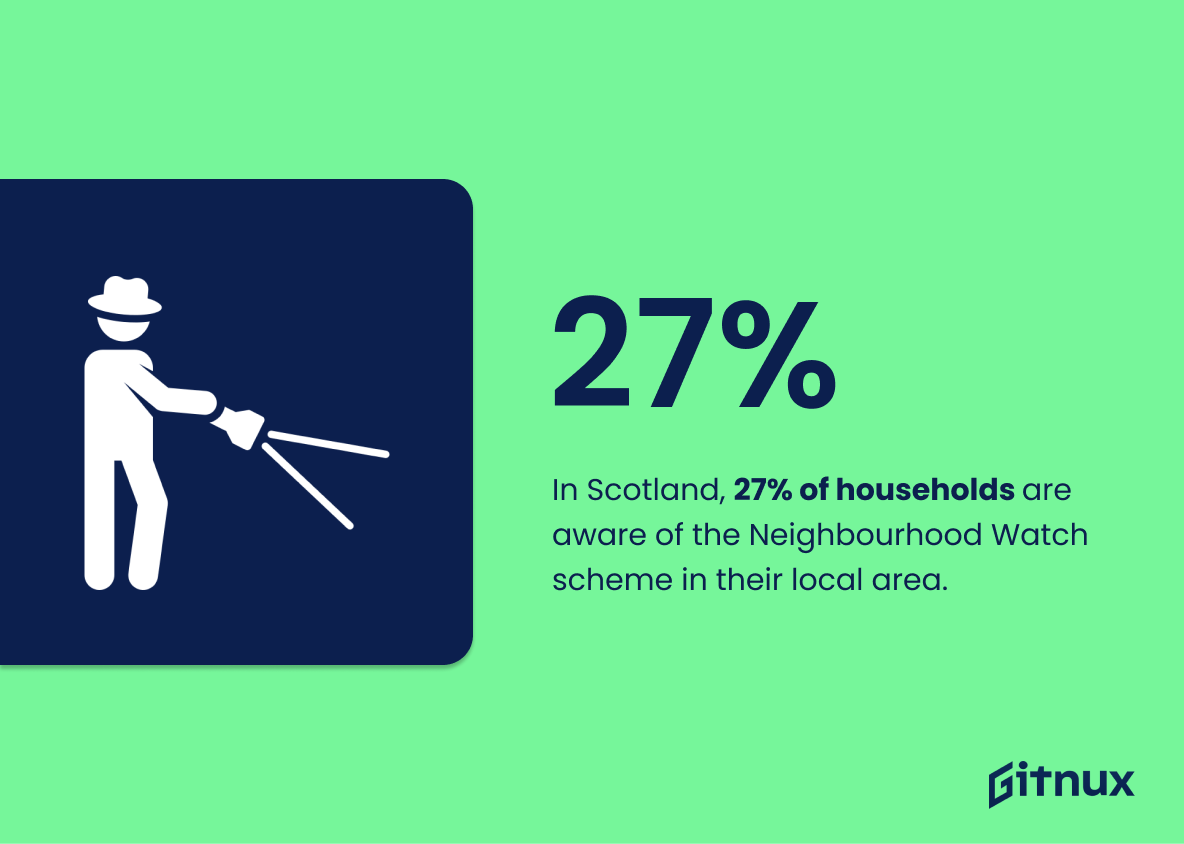Neighbourhood Watch is a community-based crime prevention program that has been in existence since the late 1960s. It involves members of local communities coming together to help reduce and prevent crime, as well as build stronger relationships between neighbours. This blog post will explore some interesting statistics about Neighbourhood Watch from around the world, including its membership numbers, effectiveness at reducing crime rates and other related information.
In England and Wales alone there are over 2.3 million Neighbourhood Watch members (Ourwatch). Studies have shown that participation in such schemes can reduce burglary by 29% (York) while also attempting to reduce overall crime levels by 16% (Springer). In Australia 90% of states and territories have their own version of this scheme with 81% having street signs present for visibility purposes (Academia). Furthermore 51% of Australian participants believe it helps fight against criminal activity according to research conducted in 2000(Pubmed), while 65 % feel they make an impact on their respective communities based on a Scottish case study published in 2015(Researchgate).
The United States currently has 40 000 registered members through the National Sheriffs’ Association website(Sheriffs) whilst only 17 %of London residents were partaking back 2013 according to data collected by London Councils.(Londoncouncils) The Netherlands meanwhile boasts 60 percent coverage due largely thanks to neighbourhood watch apps available throughout most areas.(BMJ) Research suggests these programs can be effective when it comes tackling vandalism too; reductions ranging anywhere from 18 – 49%, depending on location.(Timelesspro ) South Australia had 1100 groups operating 2016 whereas New Zealand was estimated 400 across 2018 . Finally homes without security devices are five times more likely than those with visible neighbourhood watch signage being burgled ,accordingto Envoplan’s findings .
Neighbourhood Watch Statistics Overview
Neighbourhood Watch attempts to reduce crime by 16%.
This statistic is a testament to the effectiveness of Neighbourhood Watch in curbing crime. It shows that the program is having a tangible impact on the safety of communities, making it a valuable resource for those looking to protect their homes and families.
Participation in Neighbourhood Watch reduces the likelihood of burglary by 29%.
This statistic is a powerful testament to the effectiveness of Neighbourhood Watch in deterring burglary. It demonstrates that by joining a Neighbourhood Watch program, individuals can significantly reduce their chances of becoming a victim of burglary. This is an important point to make in a blog post about Neighbourhood Watch Statistics, as it highlights the value of participating in such a program.
In Australia, there is a Neighbourhood Watch program in 90% of states and territories.
This statistic is a testament to the success of the Neighbourhood Watch program in Australia, as it demonstrates that it is present in the vast majority of states and territories. It is a powerful indicator of the program’s reach and effectiveness, and is an important piece of information to include in a blog post about Neighbourhood Watch Statistics.
51% of Neighbourhood Watch members in Australia believe their scheme helps fight crime.
This statistic is a powerful indicator of the effectiveness of Neighbourhood Watch in Australia. It shows that the majority of members believe that their involvement in the scheme is making a positive difference in their communities, helping to reduce crime and make their neighbourhoods safer. This is an important statistic to consider when discussing the impact of Neighbourhood Watch in Australia, as it provides evidence that the scheme is having a positive effect.
Neighbourhood Watch in the US has over 40,000 members registered on the National Sheriffs’ Association website.
This statistic is a testament to the success of Neighbourhood Watch in the US, with over 40,000 members registered on the National Sheriffs’ Association website. It speaks to the power of community-driven initiatives to create safer neighbourhoods and highlights the importance of Neighbourhood Watch in the US.
65% of Neighbourhood Watch members are satisfied their group has a visible impact on the community.
This statistic is a testament to the effectiveness of Neighbourhood Watch groups in making a positive difference in their communities. It shows that the majority of members are satisfied with the impact their group is having, indicating that the organization is achieving its goal of providing a safe and secure environment for its members. This statistic is an important indicator of the success of Neighbourhood Watch and should be highlighted in any blog post about Neighbourhood Watch Statistics.
In 2013, only 17% of residents in London participated in a Neighbourhood Watch scheme.
This statistic serves as a stark reminder of the low level of participation in Neighbourhood Watch schemes in London in 2013. It highlights the need for more people to get involved in order to make their neighbourhoods safer and more secure.
In the Netherlands, over 60% of the residents live in an area with a Neighbourhood Watch app.
This statistic is a testament to the success of Neighbourhood Watch in the Netherlands. It shows that the app has been widely adopted by the population, indicating that it is providing a valuable service to the community. This statistic is a powerful indicator of the effectiveness of Neighbourhood Watch in the Netherlands, and serves as a great example of how the app can be used to improve safety and security in neighbourhoods.
Approximately 7% of Neighbourhood Watch coordinators are aged below 35, and 51% are aged 60+ in the UK.
This statistic is a telling indication of the age demographic of Neighbourhood Watch coordinators in the UK. It highlights the fact that the majority of coordinators are aged 60+, while only a small fraction are aged below 35. This is important to consider when discussing Neighbourhood Watch Statistics, as it may suggest that the younger generations are not as involved in the initiative as the older generations. This could be due to a lack of awareness or interest, or it could be due to other factors. It is important to consider this statistic when discussing Neighbourhood Watch Statistics, as it could provide insight into the effectiveness of the initiative.
In the United States, 37% of communities have a Neighbourhood Watch program.
This statistic is a powerful indicator of the prevalence of Neighbourhood Watch programs in the United States. It demonstrates that a significant portion of communities have taken the initiative to implement a program that helps to keep their neighbourhoods safe. This statistic is an important reminder of the importance of Neighbourhood Watch programs and the positive impact they can have on communities.
In Scotland, 27% of households are aware of the Neighbourhood Watch scheme in their local area.
This statistic is a telling indication of the success of the Neighbourhood Watch scheme in Scotland. It shows that a significant portion of households are aware of the scheme and its presence in their local area, suggesting that the scheme is having a positive impact on the community.
In 2016, it was estimated that South Australia had over 1100 registered Neighbourhood Watch groups.
This statistic is a testament to the success of Neighbourhood Watch in South Australia. It shows that the program has been embraced by the community, with over 1100 groups registered in 2016. This indicates that South Australians are committed to creating safer and more secure neighbourhoods. It also demonstrates the effectiveness of Neighbourhood Watch in reducing crime and promoting community safety.
Conclusion
The statistics presented in this blog post demonstrate the prevalence and effectiveness of Neighbourhood Watch programs around the world. From its beginnings in the United States, to its current presence across 90% of states and territories in Australia, it is clear that Neighbourhood Watch has become an important part of many communities’ efforts to reduce crime. The data also shows that participation can have a significant impact on reducing burglary rates by up to 29%, as well as vandalism by 18-49%. Furthermore, 81% of schemes include street signs which are believed to be effective deterrents for potential criminals. Finally, over 2 million members are registered with Neighbourhood Watch groups throughout England and Wales alone – demonstrating just how popular these initiatives have become worldwide.
References
0. – https://www.ncjrs.gov
1. – https://www.pubmed.ncbi.nlm.nih.gov
2. – https://www.researchgate.net
3. – https://www.link.springer.com
4. – https://www.ourwatch.org.uk
5. – https://www.londoncouncils.gov.uk
6. – https://www.bmj.com
7. – https://www.academia.edu
8. – https://www.sa.gov.au
9. – https://www.wellingboroughneighbourhoodwatch.wordpress.com
10. – https://www.york.ac.uk
11. – https://www.crimeandjustice.org.uk
12. – https://www.sheriffs.org



